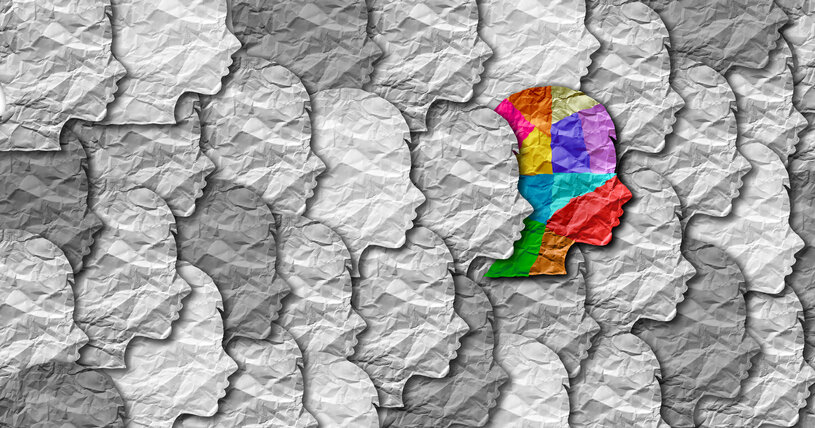An education strategy without the inclusion of neurodivergent students is incomplete.
Inclusivity has been a focused concern of educational institutions, especially during the past decade. Awareness about the educational experiences of social minority students has risen in recent periods. However, there is a long way to go regarding the quality and equality of education for social minority students and the students who process things on the cognitive level differently, i.e., those who are neurodivergent (ND).
Neurodiversity is a general term referring primarily to individuals with autism. It also includes people with dyslexia, dyspraxia, attention deficit hyperactivity disorder (ADHD), or other conditions that exile them to navigate cognitive and emotional processes that differ from the norm. The term was coined in the 90s when autism-rights activists like Jim Sinclair, Kathy Lissner Grant, and Donna Williams founded the International Autism Network on the principle that this condition is not a disease cognitive processing. Assessing and understanding autism and other mental processing systems in people are the first steps in delivering a genuinely inclusive educational experience to everyone, considering how they learn and perceive the world.
Difference vs. disability
One of the most persistent stigmas associated with how we view neurodiversity is to consider them diseases or disabilities, diminishing students’ potential to adapt to the standards and develop skills like everyone else who works under the norms. Clinical psychologist and teacher Elisa Luz Soto Ceballos presented the Mexican newspaper La Tribuna a fundamental perspective on approaching neurodiversity effectively: “It’s not bad or deficient; it is a variety of the human brain that has other strengths and challenges.”
While offering new avenues for quality educational experiences to neurodivergent people, this perspective is not shared by the entire scientific community nor by the families or individuals affected by these conditions. In an article for the Washington Post, journalist and editor Alisa Opar wrote about the different perspectives within a movement promoting neurodiverse people’s visibility, in this case, people with autism. Opar argues that there is a community with divided opinions on how to define neurodiversity. On one side would be the parents who do not have access to efficient care and educational systems. They live on the extremity of the mental condition spectrum. They continuously accompany and support their children who have intellectual disabilities, limited language skills, and who may be injurious to themselves. For them, this deep-end of the spectrum presents autism as a medical condition that usually needs intense and constant treatment.
The other group is people with functional neuropathies. They may present conditions that are an obstacle to social adaptation or some aspects of learning. Still, their challenges do not compromise the fundamental aspects of their cognitive capacity, physical integrity, or human dignity. While neurodiversity can be classified into sets of various mental and cognitive processes, the dilemma is to define whether students in the conditions described above present only a divergence or a mental disorder. For this, we would have to know the levels of functionality of the divergencies. A high-functioning individual can make use of resources aimed at developing their specific cognitive processes and social integration. In this context, it would be correct to refer to neurodiversity as out-of-the-norm elements that can be treated and managed therapeutically. To decipher where the student lies on the spectrum and how their case can be worked is a timely diagnosis is vital.
Integrated education or special education
Timely diagnosis is necessary to ensure the quality of the educational experience in a neurodiverse classroom. For success, the school psychologists’ role must expand so they work on a team with families and teachers to assess student needs on a case-by-case basis and discern whether the students’ atypical cognitive character in question would let them get the most from classes within a general student population.
The work of psychologists and teachers should not be restricted to considering only students. Parental education on the subject and their accompaniment are crucial to ensure emotional well-being and access to education for neurodiverse students. Reconciling parental expectations with what is known about neuropathy and the children’s potential is an incredibly complex task that is often not under the microscope when it comes to neurodiversity in the educational sphere. This aspect must be considered to develop effective strategies for the integrated or specialized education of students with different cognitive abilities.
Jim Sinclair embraces the idea of an integrated existence with human dignity for neurodiverse people with a conclusive thought. While it is focused on people with autism, it provides transcendent guidance on how to fit neurodiversity in family and educational spaces: “You didn’t lose a child to autism. You lost a child because the child you waited for never came into existence.” In his essay “Don’t mourn for us,” Sinclair sums up a few words all that is needed to lay the foundation for an educational future for neurodiverse students: Recognize their existence on their terms, not ours.
Do you have students with neuropathies in your class? What strategies do you implement for integrated or specialized education? Are you a neurodiverse student? What has been your experience in the educational system? Tell us in the comments.
Translatio
n by Daniel Wetta.
This article from Observatory of the Institute for the Future of Education may be shared under the terms of the license CC BY-NC-SA 4.0 
)
)


)